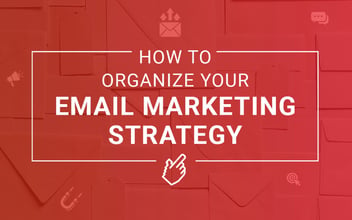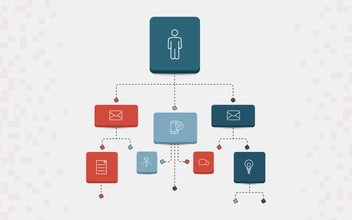As Alicia Silverstone portraying Cher Horowitz said in the (spectacular) 1995 film “Clueless,” “it's like when I had this garden party for my father's birthday, right? I said RSVP because it was a sit-down dinner. But people came that, like, did not RSVP. So I was, like, totally buggin'.”
So how does this movie quote actually relate to inbound marketing and tracking ROI? I promise there’s a point.
Before you strategize any marketing efforts, it’s important that you determine your purpose and what you’re trying to achieve. Similarly to planning a party, there are factors that you can’t control or don’t foresee, i.e. attendees showing up that did not RSVP or roadblocks in generating tailored content. You can help alleviate this tension by thoroughly planning your inbound marketing strategy and having tools in place to analyze those activities. This will let you successfully track ROI now and for the future. Here’s how you do that.
And if you’re still confused about inbound marketing versus traditional marketing, check out last week’s blog post, Harnessing the Power of Traditional And Inbound Marketing, detailing the differences.
Your Inbound Marketing Strategy Starts With Goals
You should always start by determining what you want to achieve with your marketing activities. Whether it’s form submissions, email opens or social media clicks, you need to identify and document S.M.A.R.T. goals. S.M.A.R.T. stands for:
- Specific: clear and focused
- Measurable: quantifiable numbers
- Attainable: realistic and achievable
- Relevant: aligns with you and the rest of the organization’s efforts
- Timely: time-period to achieve your goal
Setting up your goals S.M.A.R.T.-ly eliminates any confusion. It gives your team and other members of the organization visibility into your goals. This helps you confirm that these measurable items are what you should be focusing on.
Determine Your Buyer Personas & Who Will be Your Target Audience
If you’ve previously read some of our other blog posts, including, “What is a Buyer Persona and How Can It Help My Business?,” then you know that buyer personas are core to any inbound marketing strategy.
Buyer Personas are semi-fictional representations of your ideal customer. When you have clearly documented these personas, you can better tailor your content and messaging to them, making your marketing significantly more impactful.
There are a few ways you can research and identify who these personas are. First, align with your sales and customer services teams as they spend a lot of time communicating with your customers. Second, directly interview your customers, i.e. your evangelists or promoters. And third, add fields to the forms on your website that prompts them to answer a key persona question.
Regardless of the methods you use to research these personas, here are some important questions you should answer:
- Who are they? Are they male or female? Age? Do they have a family?
- Are they a decision maker, influencer or a general contact?
- How do they like to communicate or receive information?
- What are their goals? How can we/our business help to achieve them?
You’ve identified these personas, now what? Make sure you document and store them in a space where others in your organization can find them. If you have a tool like HubSpot, you can keep it with your marketing automation tools and have them set as properties on the contact records. Setting that up will make it easier to segment lists and market directly to that audience.
Strategize Your Tailored Content & Offer
You’ve planned out your goals, you’ve researched and documented your buyer personas: it’s now time to create your tailored content and decide how you’re going to leverage that content.
Keeping in mind your personas and goals, it’s also important to understand where your personas are searching for information and also where they are in the buyer’s journey. If your ideal customer is spending a lot of time on YouTube, gain their attention by producing video content, uploading it to YouTube and promoting it on your social media accounts and through paid advertising.
You don’t have to stick to one form of communication either. If part of your S.M.A.R.T. goal is to have a specific number of form submissions, promote the form through email marketing with a CTA that redirects them to a landing page with the form on it. Create blog posts that will make them want to fill out that form by the end of them reading it.
Whichever method you choose, make sure to also optimize your content for keywords and topics your personas would be searching for. Add these search terms where they fit, and don’t go overboard with SEO. You still want your content to sound natural and not overly-structured with keywords.
Analyze Your Results & Track Important Data
You’ve not only developed your inbound marketing strategy but also determined your goals and identified your buyer personas. Give yourself a pat on the back. Hopefully, you’re not pulling a Cher and aren’t “totally buggin’” because you’ve strategically planned and executed your marketing campaign. You’re not 100% done though. One of the final key steps left is analyzing your results.
You’ve already identified what your goals are, now you need a place to keep a track of progress on those goals. With tools like HubSpot and Google Analytics, you can easily set up dashboards and reports, so you can have complete insight into this data.
In Google Analytics, set up your goals, so you can track when certain activities have been completed. For example, when someone made a purchase on your e-commerce site or filled out the request a quote form.
In HubSpot or other marketing automation tools, you can set up campaigns that’ll keep all analytics that are tied to it in one spot. You can see email opens/clicks, social media engagement, blog views, etc. With reports and dashboards, you’re able to build out custom reports that can show you data against KPIs you have set as well as conversions for marketing qualified leads (MQLs) to customers. There are many different ways you can customize these dashboards and reports. Which means no matter how you set up your S.M.A.R.T. goal, you’ll be able to accurately and efficiently track how your efforts are working related to your R.O.I.
The best way for stakeholders or decision makers to understand your marketing R.O.I. or how you are helping to generate sales is to give them consistent reporting and data behind your efforts. Tailoring these dashboards and presenting them to those key people in your organization will ensure visibility as your efforts progress.
Need Help with Your Next Inbound Marketing Campaign?
Contact us today. We'd love to help you set up and execute your next inbound marketing campaign.





